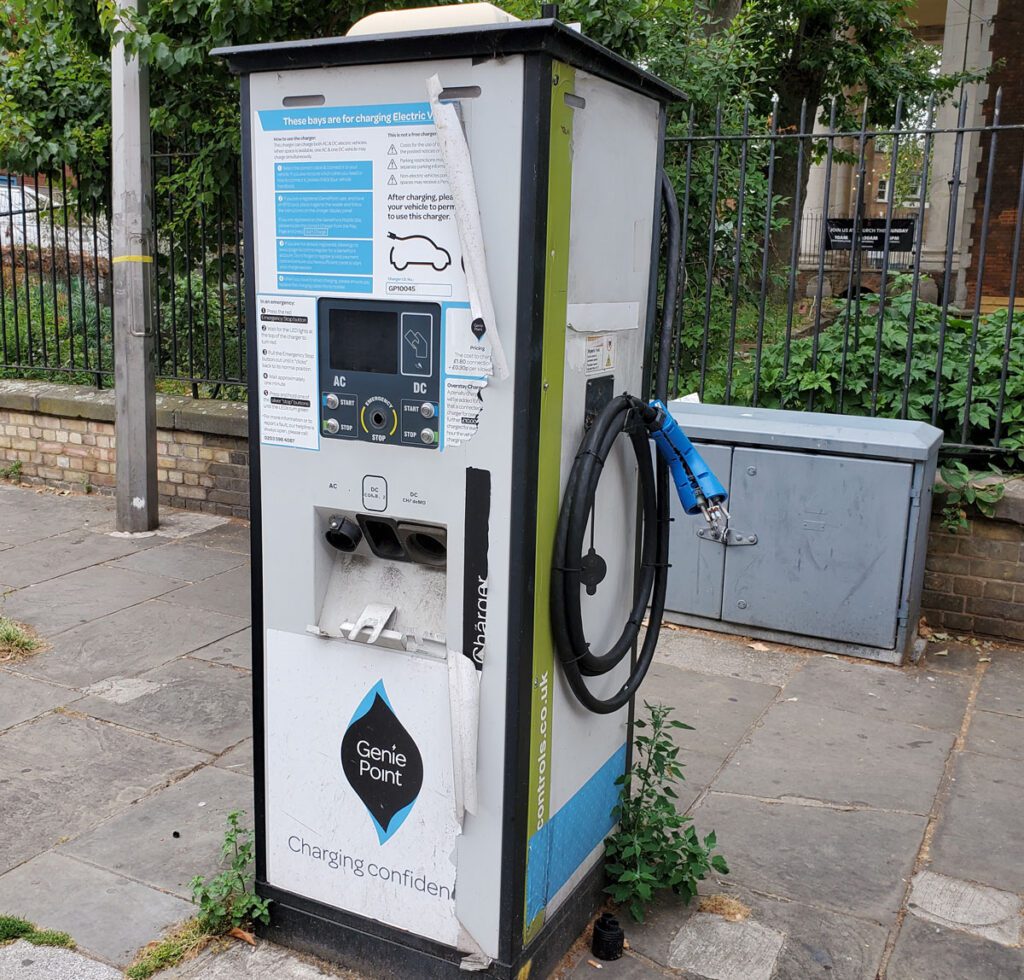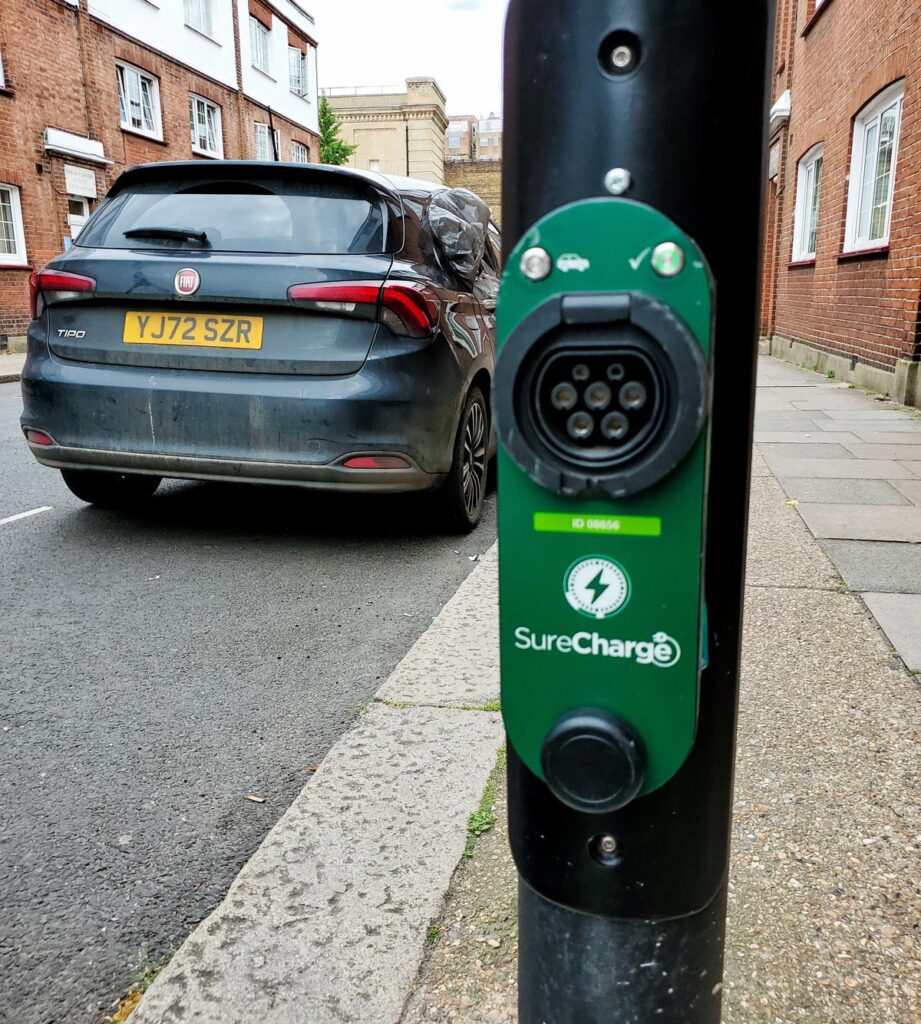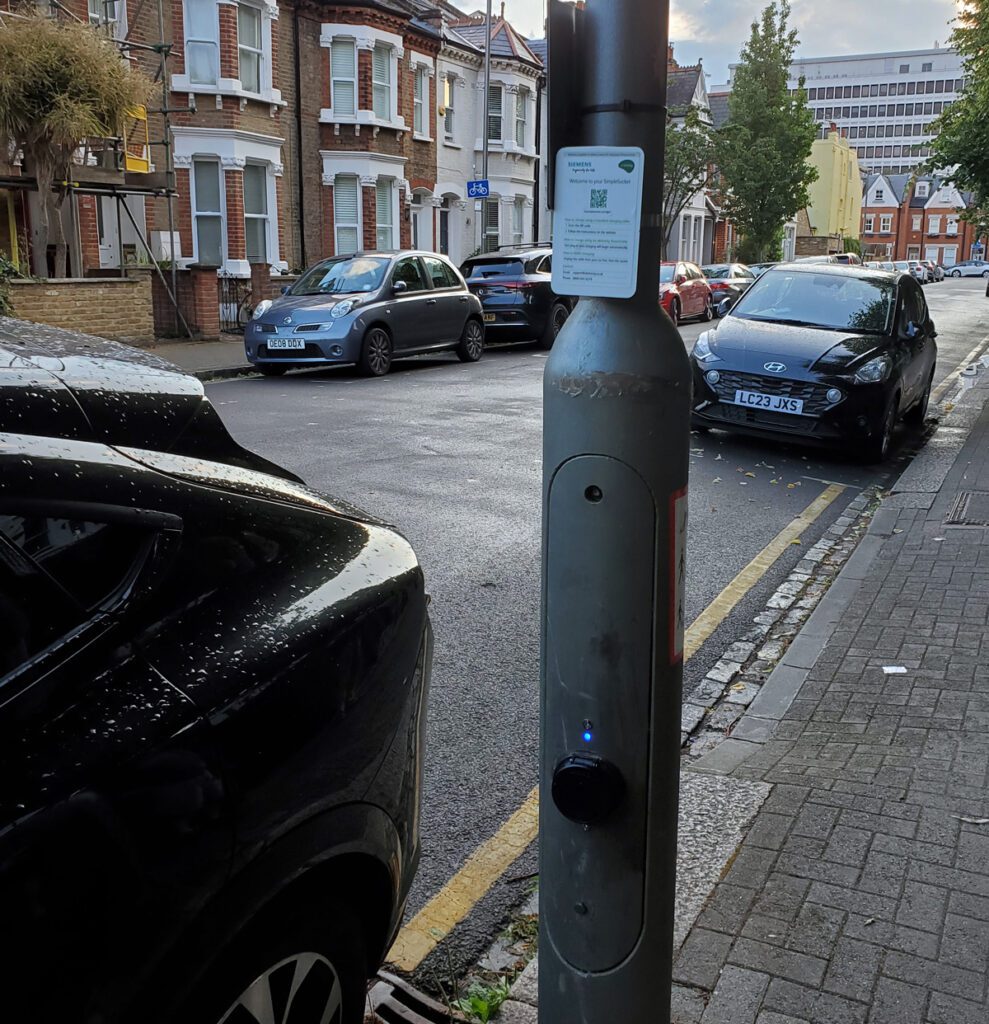
Traveling in Europe (and nearby countries) these days is in some ways like traveling to the future. London has been an electrification leader for some years, and the streetscape this summer looks much more electric than it did on my last visit 4 years ago.
I saw no evidence of the “hollowing out” of downtown districts that has hit many US cities in the wake of the work-from-home trend. Office towers in The City and Docklands may be struggling with low occupancy rates, but London’s shopping and nightlife hotspots remain as jam-packed as ever.
Oxford Street is a long string of department stores with a massive transport artery (buses, taxis and pedicabs only) running down the middle. While waiting for my wife and sister-in-law to finish shopping, I made an informal survey of London bus powertrains. On these particular routes, hybrid, hydrogen, battery-electric and old-fashioned stinkpot buses were running, in roughly equal proportions.
London has been deploying electric buses since at least 2015. While the ambitious objectives set at that time weren’t met, the city has made great strides in electrifying its enormous fleet. According to an audit from March 2023, there are 3,835 hybrid buses, 950 battery-electric buses, and 20 hydrogen fuel cell buses, out of a total bus fleet of 8,643. That makes around 56% of the bus fleet zero-emission, and 100% of the fleet meets Euro VI emission standards.
After observing the seedy entertainment centers of Soho, we took an Uber to a jazz club. Our driver, a young Turkish gentleman, told us he loves his Hyundai Ioniq. His previous car was a Kia Niro EV, and he was quite knowledgeable about EVs. His Ioniq has a range slightly over 200 miles, which he said was plenty for a day of stop-and-go city driving. When he gets home at night, he plugs into a lamppost charger for a slow charge, and his battery is topped up the next morning. A nightly charge costs him about 10 pounds. (Driving 200 miles on petrol would cost around 32 pounds, or $40, at current prices.)
The petrol savings are just part of the story. In addition to its Congestion Zone, London now has an Ultra-low Emissions Zone (ULEZ), in which carbon-emitting vehicles are subject to fees. EVs are exempt from both the Congestion Zone and ULEZ fees, which add up to 27.50 quid ($34) per day.
The massive cost savings explain why a large and rapidly growing proportion of the city’s taxis and rideshare vehicles are electric. London’s iconic black cabs started their journey to electrification in 2016, and now plug-in cabs outnumber old-fashioned diesel taxis on the capital’s streets.
The London EV Company (LEVC), a subsidiary of Chinese automaker Geely, makes a plug-in hybrid taxi called the TX5. The LEVC TX offers 78 miles of electric range. It features a 33 kWh LG Chem battery pack and a 110 kW (148 hp) electric motor that drives the rear wheels. The TX drives in electric mode all the time, and the battery is recharged by an 81 hp 1.5-liter three-cylinder petrol engine.
LEVC started selling the TX in 2018, and it now represents more than 40 percent of all the black cabs in London—around 6,000 ply the city’s streets, squares, terraces, crescents, courts, circuses and closes. (The TX also is also in operation in Germany and Israel.)



Private EVs are also common in London—I saw loads of Teslas, more than a few Ford Mustang Mach-Es, and loads of Hyundais and Kias. At first, Londoners were a little slow to embrace EVs, due to the Plight of the Drivewayless. As in many dense cities, many car owners have no driveways, or even assigned parking spaces—they park on the street, and have no possibility of installing home chargers. For several years, the city was a laboratory for urban charging solutions—some clever, some charmingly low-tech, and some, frankly, crazy. The solution (as drivers in Oslo and Amsterdam have also learned) turned out to be quite simple—lots and lots of curbside chargers. Street chargers of all brands and form factors are to be seen all over the city. Many are installed in lampposts—an ingenious solution that minimizes sidewalk clutter and takes advantage of existing electrical service. One DC fast charger on a quiet side street provided an object lesson in the importance of proper siting—yobs had ripped out the cables for the copper, and vandalized the cabinet for good measure.
Whatever you may think about Boris and the rest of the crew who brought us Brexit, it can’t be denied that on their watch, London has made great strides in transit electrification (other parts of The Isles are less charged). Londoners have lots of green transit options, from EVs to bike lanes to the city’s sprawling, modern public transport networks. Alas, the positive momentum may not last. On the same day that the UK reported its hottest June in history, the Tory government revealed plans to zero out the UK’s planned funding for global climate programs. As the country tries to deal with some unfortunate economic realities, EV-friendly domestic programs may soon face the budget ax as well.
from Charged EVs https://ift.tt/JuXmplk



No comments:
Post a Comment